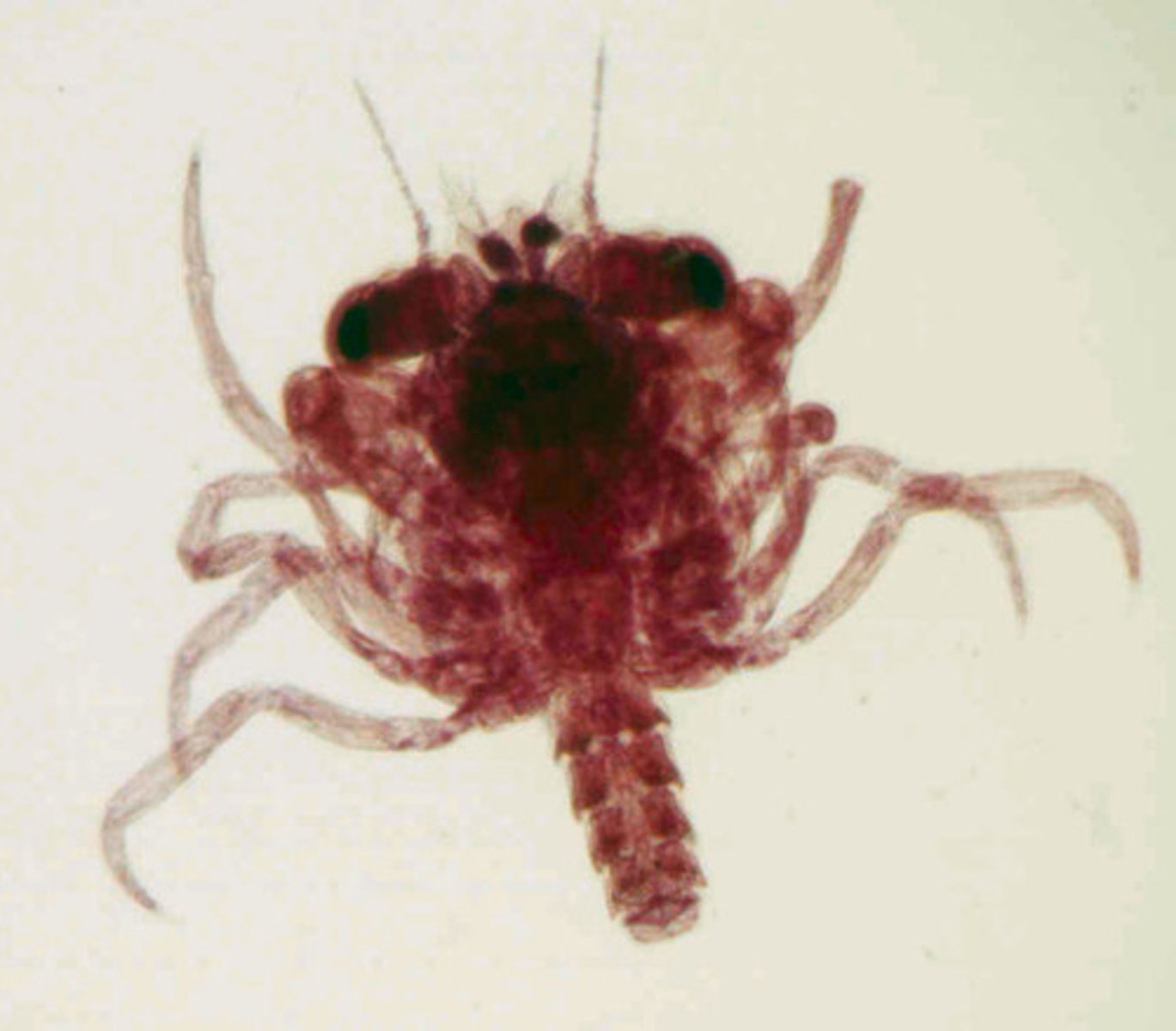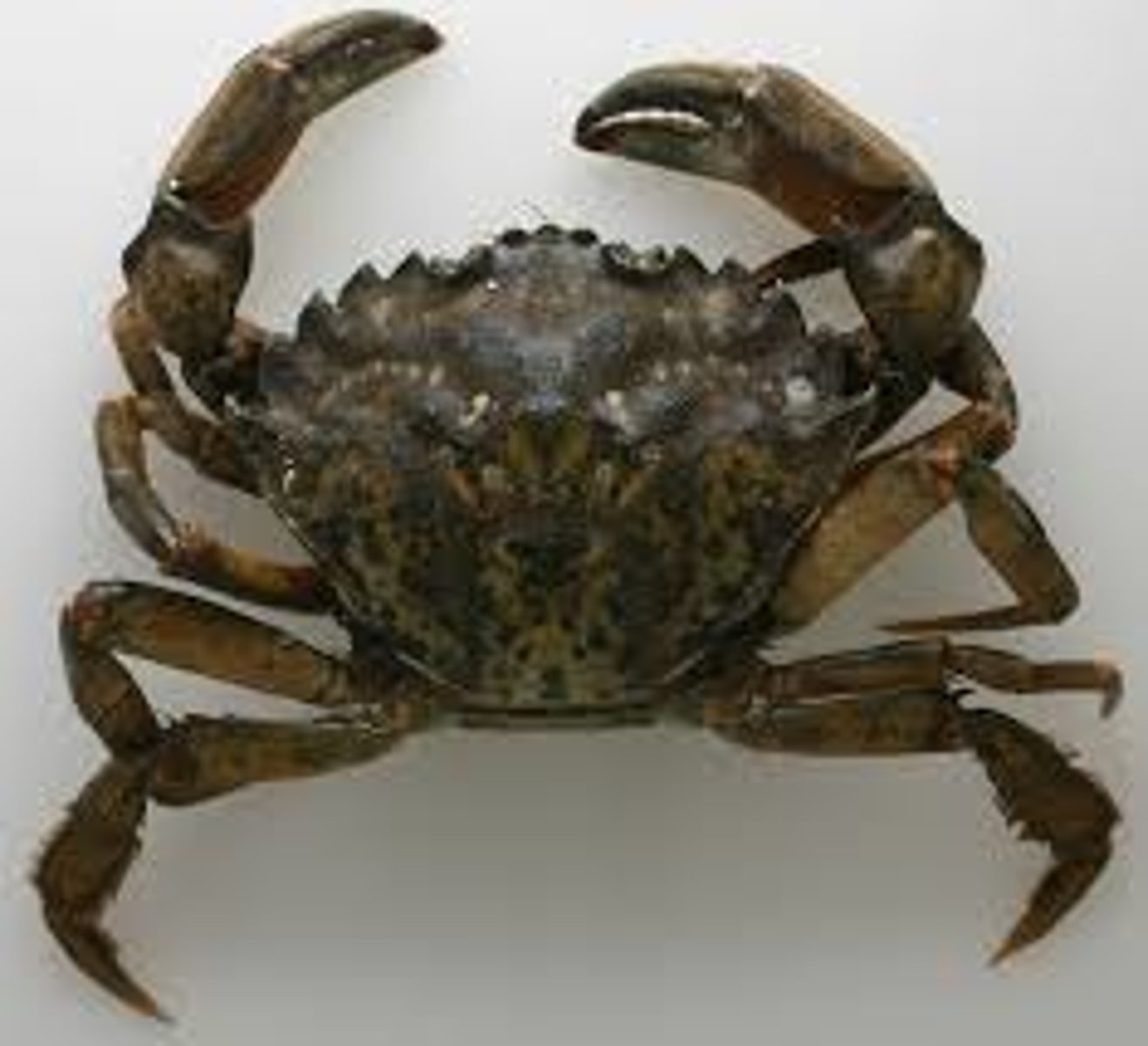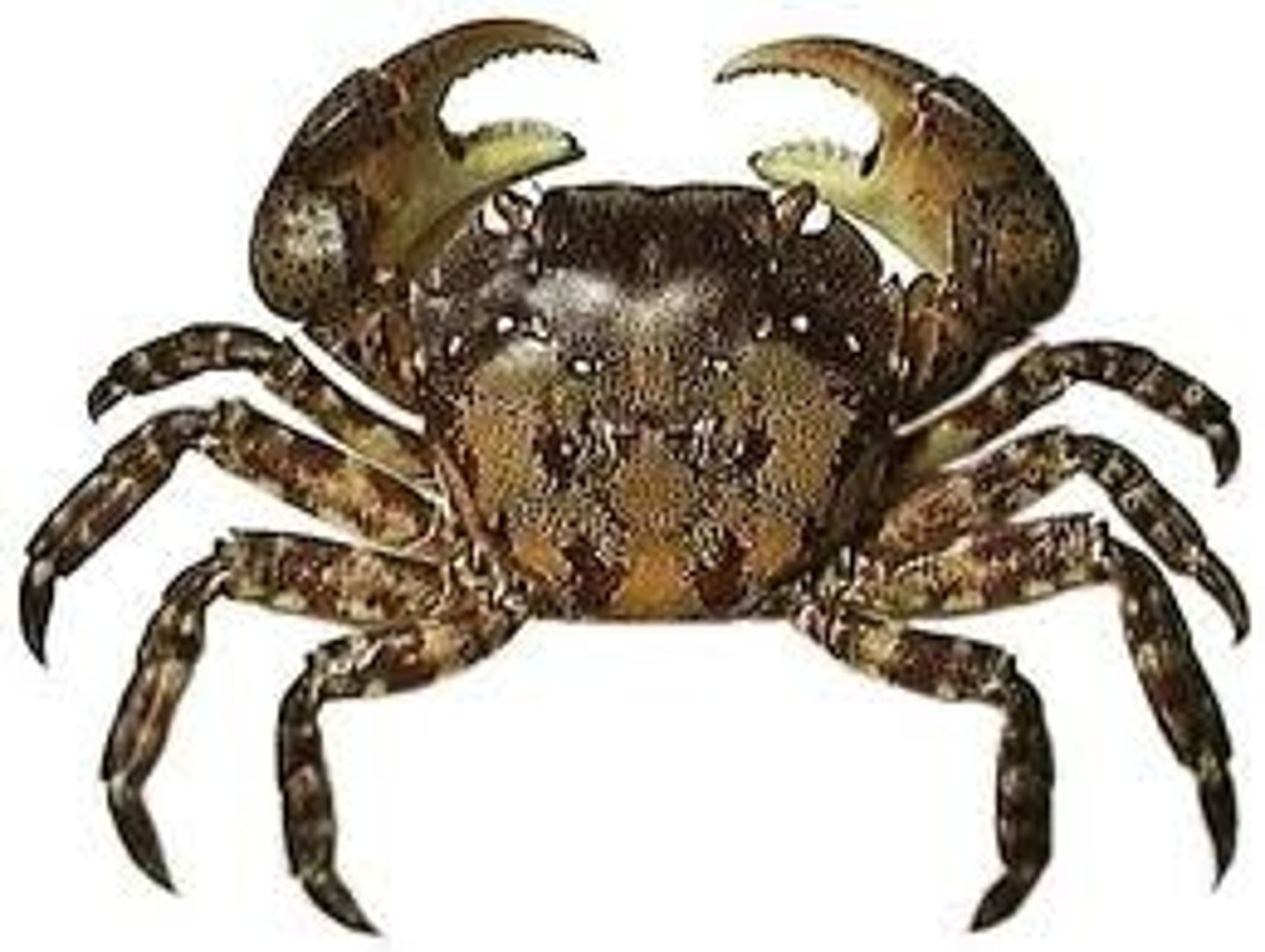Arthropods - Armored Achievers
1/39
There's no tags or description
Looks like no tags are added yet.
Name | Mastery | Learn | Test | Matching | Spaced |
|---|
No study sessions yet.
40 Terms
arthropods
Animals with a hard exoskeleton, jointed appendages, body segments, and bilateral symmetry
jointed appendages
limbs made of pieces that fit together, run by pairs of muscles, include legs, wings, mouth parts, and antennae
chitin
carbohydrate that forms part of the exoskeleton of arthropods, stiff
compound eyes
contain many lenses, good at sensing movement, stalked in most marine arthropods, have a wide field to view
molting
shedding the exoskeleton in order to grow larger, results in discontinous increases in size
tagmatization
modification of body segments for specific jobs, some segments may fuse together
nauplius
free-swimming larva of most crustaceans, triangular with 3 pairs of appendages and one eye
Crustaceans
majority of marine arthropods, crabs, copepods, lobsters, and shrimp, have 2 pairs of antennae, nauplius larvae, most have gills
isopods
Dorst-Ventrally flattened (squashed top to bottom), live on land, in freshwater, and in the ocean
decapod
Crustaceans that have five pairs of walking legs; a carapace and an abdomen, include shrimp, crabs, and lobsters
thorax
Body segment that is usually behind the head in insects, but fused with the head in crustaceans
abdomen
Usually the last body segment, the hind, contains reproductive organs and part of the digestive tract
antennae
Sensory structures that are able to detect movement, vibrations, and chemical signals/smells
swimmerets
small paired appendages located on the ventral surface of the abdomen of crustaceans used for swimming or reproduction
telson
flat structure at the end of the abdomen in crustaceans, the telson and uropods form the end of the tail
Examples of arthropods
insects, spiders, scorpions, crabs, lobsters, shrimp, copepods, and barnacles
cephalothorax
First body segment in crustaceans, head and thorax fused together, also called carapace
Three main body segments in insects
Head, thorax, abdomen
Exoskeleton
Hard, external, covering, jobs include protection, support, and movement, made of chitin and hardened with CaCO3 in marine arthropods, thickness varies over the body
Ecdysis
Process of removing the old exoskeleton, literally means "an escape." exoskeleton is split when animals take in water or air and increase their blood pressure
Copepods
Tiny abundant planktonic animals, drifters, filter feeders that love PPK, long antennae, segmented abdomen and thorax, no abdominal appendages, most have a single eye
Striated muscle
contracts very quickly compared to other types of muscle, multiple neurons signal contraction
Open circulatory system
Blood leaves the heart through closed vessels then dumps into body spaces before returning to heart
Arthropod reproduction
Sexual, most species have separate sexes, internal fertilization (land), external fertilization in most marine species
Class Merostomata
Two body portions, no antennae, only 4 living species all marine, includes horseshoe crabs which have a telson, 5 pairs of walking legs, and gill flaps
Rostrum
Sharp point coming off the head for defense, think shrimp
Mandibles, maxillae, and maxillipeds
Paired mouth parts in crustaceans used to manipulate and crush food
Zoea
first larval stage of crab, giant dorsal spine, big stalked eyes, and an abdomen, CUTE!

Megalops
second larval stage of crabs, looks like a mini-crab, abdomen is not tucked up yet, big stalked eyes

Green crab
invasive species in Maine, carapace has five spines and is shaped like a pentagon, fast and good at eating bivalves

Jonah crab, rock crab, red crab
native Maine species, oval carapace, 8-10 spines, may be as large as your hand, thick, muscular claws
Shrimp
extremely popular seafood, may be wild caught or farm-raised, elongated bodies, stalked eyes, slender legs, long antennae, first pair of appendages are not huge, pointy rostrum
Krill
8 pairs of walking legs, feathery gills visible, grow to about 6 cm, form enormous swarms, ecologically and commercially important, abundant in Antarctica, favorite food of seals, baleen whales, and birds
Metamorphosis
Change from larval to adult form. stages differ greatly in structure and appearance, requires molting
Chelipeds
First pair of appendages in lobsters and crabs, large, function in food capture and defense, may look the same or different (pincer and crusher)
Barnacles
Sessile as adults, enclosed by calcareous plates, reduced head, no abdomen, legs are long and form cirri which are used for filter feeding, common in intertidal zones in Maine
Crabs
dorsoventrally flattened, five pairs of walking legs, walk sideways, carapace, stalked eyes, first set of claws are large, abdomen tucked under
Lobsters
laterally compressed, five pairs of walking legs, carapace, stalked eyes, first set of claws are large, abdomen extended, commercially important Maine species
Asian shore crab
invasive species in Maine, carapace has three spines and is square-shaped, legs have light and dark bands

Season when most arthropod babies are born
SPRING - That's when the phytoplankton bloom, so food is abundant